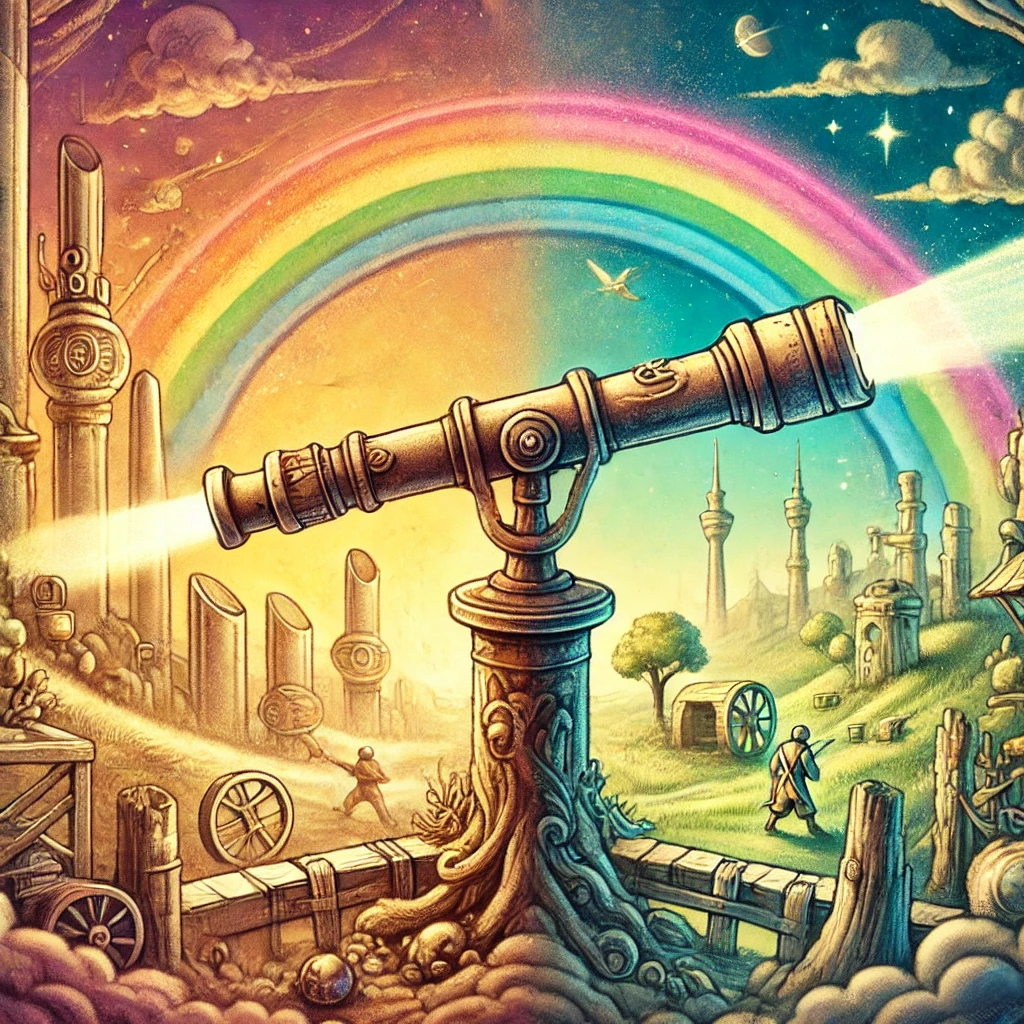A curious contraption, this two-way glass,
It peers through the future and dredges the past.
A marvel of science, a tool of delight,
But oh, the peculiar things it brings to light.
For truth, you see, is stranger than lore,
It whispers what fiction dare not implore.
The telescope shows, as plain as day,
That men oft repeat what they swear to betray.
History grins with a toothless smirk,
A record of folly, of genius, of work.
The rainbow we weave through the threads of time,
Is part sublime, and part pantomime.
Turn it forward, the lens of might,
And glimpse a future both dark and bright.
Men building towers that scrape the sky,
Yet failing to answer the eternal “Why?”
But look backward, and here’s the jest—
The questions we ask have always been best.
The colors we chase, the answers we seek,
Are painted on lives both humble and meek.
So here’s to the telescope, wondrous and sly,
A glass for the ground and a lens for the sky.
It teaches us this, in a way most profound:
The stranger the truth, the more we are bound.
The poem, The Two-Way Telescope, explores the paradoxical nature of human understanding as it bridges history and the future. It reflects on how truth, often stranger than fiction, reveals itself through time’s lens, showing humanity’s cycles of folly, progress, and unanswered questions. The telescope symbolizes the interconnectedness of past and future, reminding us that the lessons of history and the possibilities of tomorrow are inseparably woven into our infinite existence. Ultimately, it conveys the profound realization that despite advancements, the search for meaning remains eternal, and our truths—while peculiar—bind us together.

